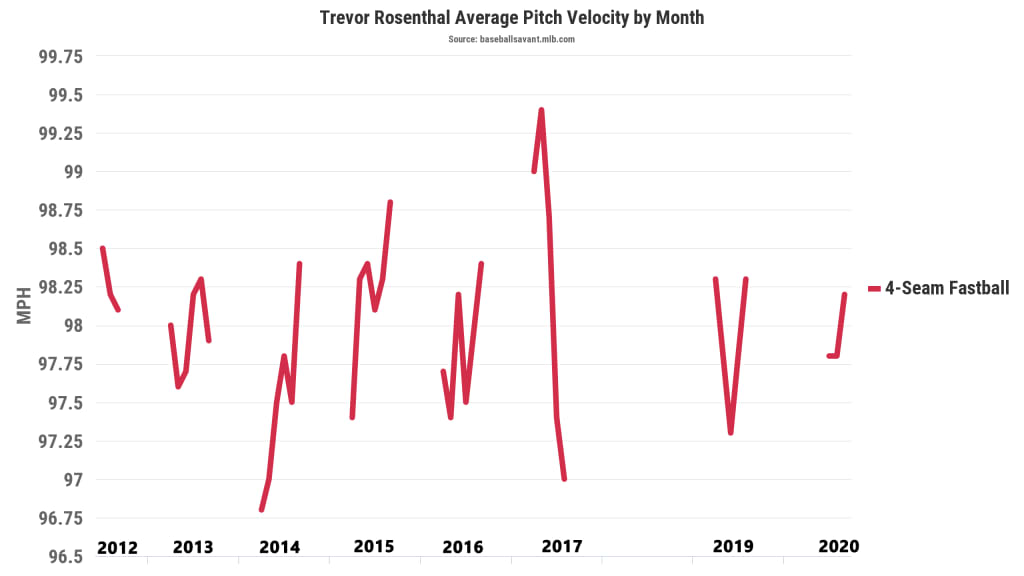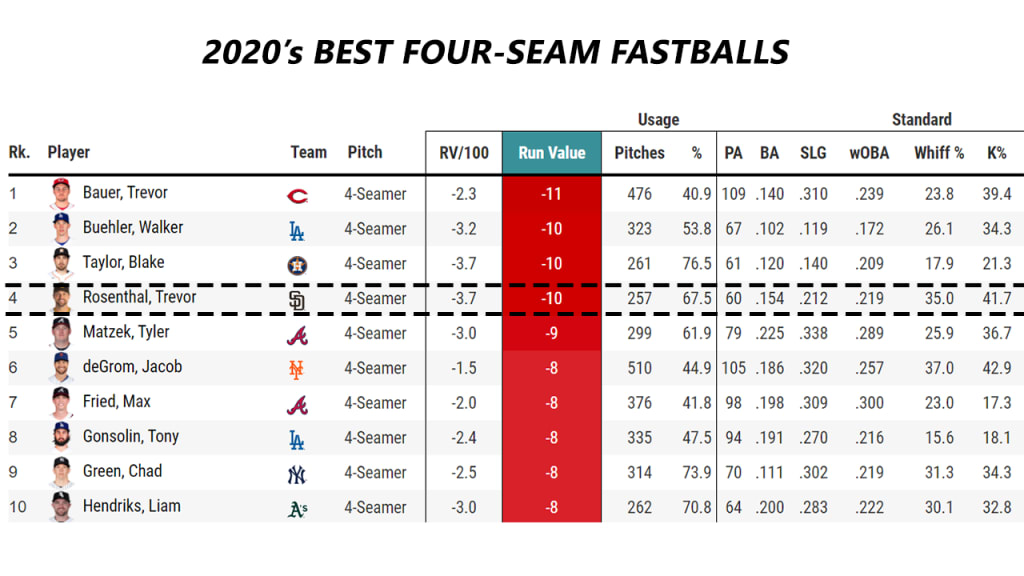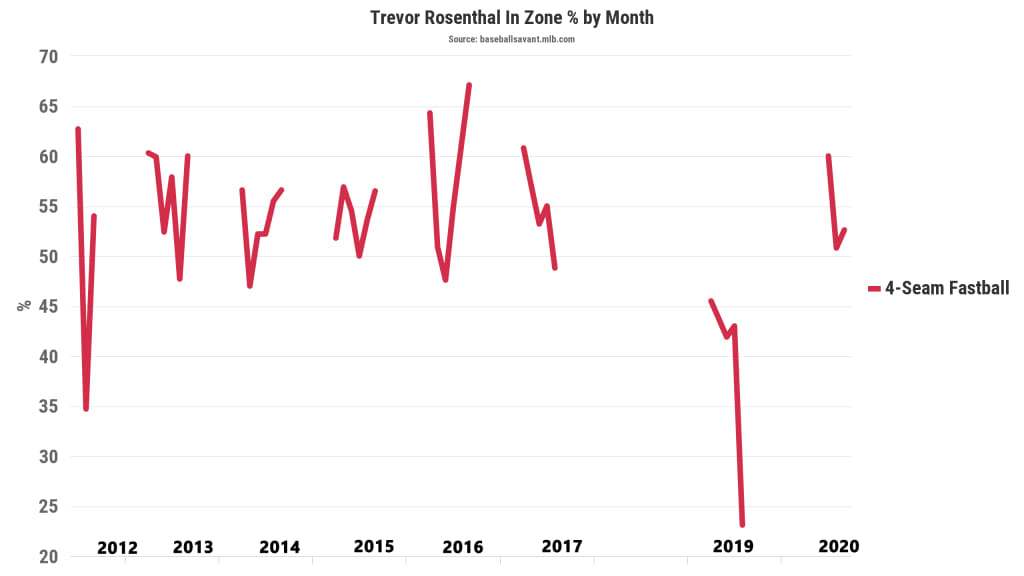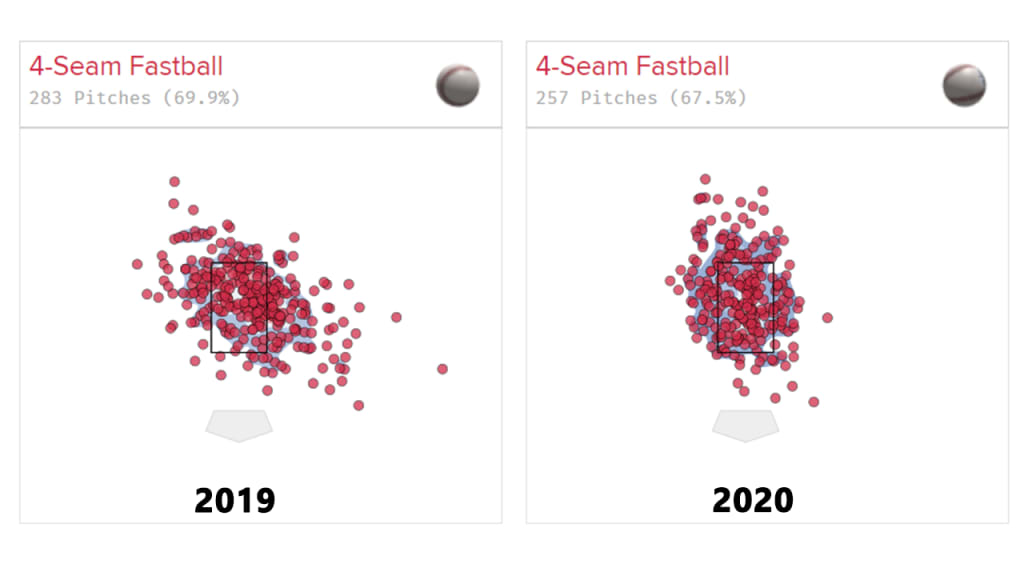How much value is there in 23 2/3 fantastic innings? Trevor Rosenthal is trying to find out. They might just be enough to make him the best remaining free-agent reliever on the market, now that Liam Hendriks has joined the White Sox.
"But Alex Colomé and his 0.81 ERA," maybe you're saying, and maybe you're right, though his declining strikeout rate worries us. But whether or not Rosenthal actually is the best remaining free-agent reliever is less the point than the fact that it's a statement we could even reasonably make, because it wasn't all that long ago that Rosenthal wasn't even considered a big league reliever. That's how wrong things had gone.
A quick recap of the Trevor Rosenthal experience, for those who don't know it:
2012-'17: Very successful St. Louis reliever
2.99 ERA, 328 games, 3.04 strikeout-to-walk ratio
For six seasons with the Cardinals, Rosenthal was one of baseball's best relievers. Only seven relievers had more strikeouts over this six-season span; he made the All-Star team in 2015. Despite some shoulder and control issues in 2016 that cost him his closer's job, he was a big part of some successful St. Louis teams, especially in the playoffs. In 23 postseason games for the Cardinals, Rosenthal allowed two earned runs, striking out 42 in 26 innings. Late in a 2017 season where he had a career-best (to that point) 37.6% strikeout rate, he injured his elbow, requiring Tommy John surgery that would keep him out of all of 2018.
2019: Disaster
13.50 ERA, 0.65 strikeout-to-walk ratio for three organizations
Rosenthal signed a one-year deal with the Nationals for 2019, but to say "it didn't go well" is an understatement, as he walked 15 in 6 1/3 innings and was released in June. He caught on with the Tigers, but after 11 more walks in nine innings, they cut him loose in August. The Yankees picked him up and sent him to the Minors, where he got into a single Triple-A game, walking three of the five batters he faced. All told, he walked a stunning 30.9% of Major League hitters, which is one of the highest single-season rates since World War II.
2020: Return to form
1.90 ERA, 23 games, 4.75 strikeout-to-walk ratio for Royals, Padres
After that performance, Rosenthal couldn't even get a Major League deal, signing with Kansas City as a non-roster invite to camp. After a strong Spring Training, he was added to the roster, and he was ... incredible. Rosenthal got into 14 games for Kansas City, striking out 21 while walking only seven, a strong enough performance that the Padres traded for him in August as a stretch run addition. In nine games for them, he struck out 17, and walked one. One! A year after not being able to throw enough strikes to stay in the Majors, Rosenthal was pitching high-leverage innings for one of baseball's best teams.
All of which leaves us ... where, exactly, for 2021? We've all had to worry so much about the "small sample size" of 2020, about what mattered and didn't over a two-month season, and the truth is, that answer is not one size fits all. It's a case-by-case thing, where we've collectively decided that Trevor Bauer's great 2020 does matter -- he'll get a far bigger contract than he would have off a down 2019 -- but that Christian Yelich's down 2020 isn't really cause for concern.
Mostly, we're trying to get past results -- even though Rosenthal's were, of course, excellent -- and into process. What went into those results? What kind of things can we trust without seeing them replicated over a full season? Was 2019 the fluke, or was 2020?
For pitchers, the easiest thing to trust is velocity. You only need to see a few pitches to know that Aroldis Chapman throws hard and that Kyle Hendricks does not. In Rosenthal's case, he always threw heat, and he still does. Last year, 650 pitchers threw at least 10 fastballs (four-seam, two-seam, or sinkers), and only 8 of them had a higher average than Rosenthal's 98.0 MPH.
As you can see on this monthly chart, that's more or less in line with what he's always done. (It's not entirely hard to see where his elbow started barking in 2017, as you can see.)

Because he relied on his fastball about 2/3 of the time, and because it was so effective -- .154 average and .212 slugging against -- it came in as one of the truly elite four-seamers in the game, using this Statcast run value measure that combines quality of the pitch as well as how often it was used.

You should have two takeaways from that chart, really. The first is that Rosenthal's four-seamer was incredibly effective in 2020, in a class with some of baseball's biggest pitching names -- Bauer, Buehler, deGrom and Hendriks. The second might be "maybe we should pay more attention to Blake Taylor," but that's another issue entirely.
So we're comfortable saying that 2020 wasn't a fluke, given how good the underlying metrics are, and given his track record of success with the Cardinals for all those years. But what about 2019? What happened?
“It felt a little bit off to begin with,” Rosenthal told the Kansas City Star last spring. “Then as it started to get worse and worse, I felt strong. I felt my velocity was good. I noticed that with my changeup I was cutting it a lot. My slider was a lot better than my fastball and my changeup, which is not normal. So those were some red flags that I saw early on.”
He wouldn't be the first pitcher to have trouble throwing strikes after Tommy John surgery; if you look at his zone rate -- very simply, percentage of pitches thrown in the strike zone -- on the fastball, you can pretty clearly see that 2019 didn't start well, and it got worse, just as he said.

The idea that command is the last thing to come back after Tommy John -- not velocity, as you might expect -- isn't just a saying.
In 2017, Patrick Dubuque of Baseball Prospectus studied the phenomenon, noting that it wasn't raw walk rate that was slow to come back in many cases so much as it was command in and around the zone.
"UCL repairees saw a worse called-strike average after returning from injury than they did before," wrote Dubuque, "with their command only returning after the second year back. It would appear those pitchers who refused to walk batters compensated for their lack of mechanics by putting their pitches closer to the center of the plate, hoping to get by on their raw stuff rather than precision."
That seems to align with Rosenthal's experience, as you can pretty easily see in this fastball location chart. (It's also worth noting that more pitches right down the middle might avoid walks, but not hard contact, as his hard-hit rate was a career-worst 41%.)

And so we get back to the original question: How much weight should you put on a shortened 2020? What do 23 2/3 innings mean after two seasons that were either lost entirely to injury (2018) or dreadfully bad (2019)? The answer is different for different players. There's never one right answer. In Rosenthal's case, we'd say the 2020 performance means a lot. We'd seen him be great in the past. The velocity remains excellent. The ability to throw strikes looks much improved. There's a history of pitchers needing a minute coming off of Tommy John surgery.
There are no guarantees in pitching, as there aren't in life. But with Hendriks gone, if we were running a team that needed a strong-armed late-inning reliever, we're pretty sure we'd have a lot of confidence in Rosenthal to fill that role. Imagine saying that even six months ago?
